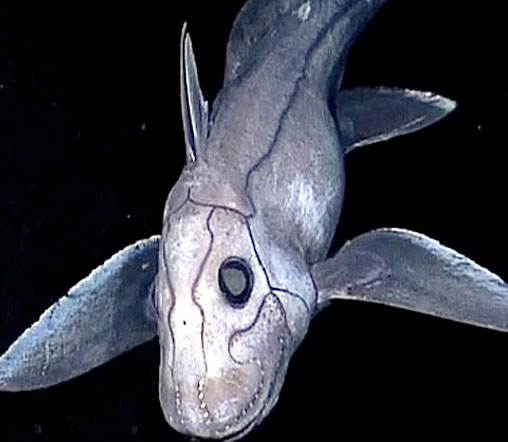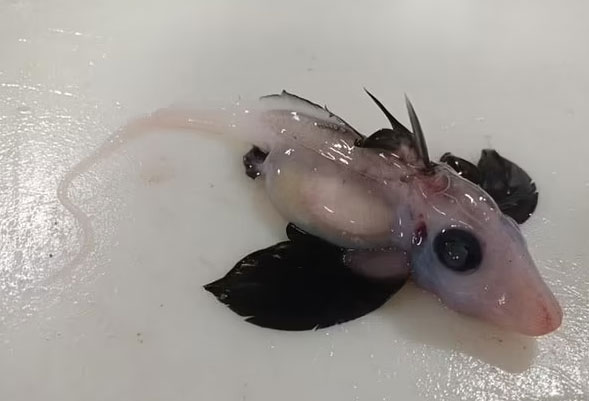A rare and eerie-looking baby “ghost shark” has been spotted off the eastern coast of New Zealand.
The Chimaera, also known as the ghost shark, rarely comes into view for humans and is difficult to detect. This rare sighting has particularly piqued the interest of scientists.

Chimaera Shark.
The Chimaera, a relative of sharks and rays, diverged from these groups around 300 million years ago. The shark has a bizarre appearance, with droopy eyes that seem stitched together. Scientists discovered the Chimaera while conducting a survey of blue-grey sharks in Australia.
This creature, which has an almost translucent and somewhat frightening appearance, lives at depths of 1,200 meters in Chatham Rise, an area on the seabed off the eastern coast of New Zealand. Experts describe this discovery as “incredible.”
Brit Finucci from the National Institute of Water and Atmospheric Research (NIWA) in New Zealand stated: “The recently hatched ghost shark still has yolk in its belly. That is truly remarkable. Most previously discovered ghost shark specimens have been adults. We have very little information about juvenile or newborn ghost sharks.”

This species lives deep in the ocean and avoids sunlight.
The Chimaera typically inhabits cold, deep waters, reaching depths of up to 2.6 kilometers, around New Zealand and eastern Australia. Due to its deep-sea habitat and avoidance of sunlight, scientists refer to it as a ghost. An adult can grow up to 2 meters long and can live for up to 30 years.
Ghost sharks are beneficial but lack teeth, using their jaws to chew on prey such as mollusks and worms. They are made of cartilage rather than bone. Females lay large egg cases that are protected by a hard shell. Notably, the male’s reproductive organ is located on its head and can retract, referred to as a “tentacle.”
They are poor swimmers, weak with a large head that has not changed much over millions of years.


















































